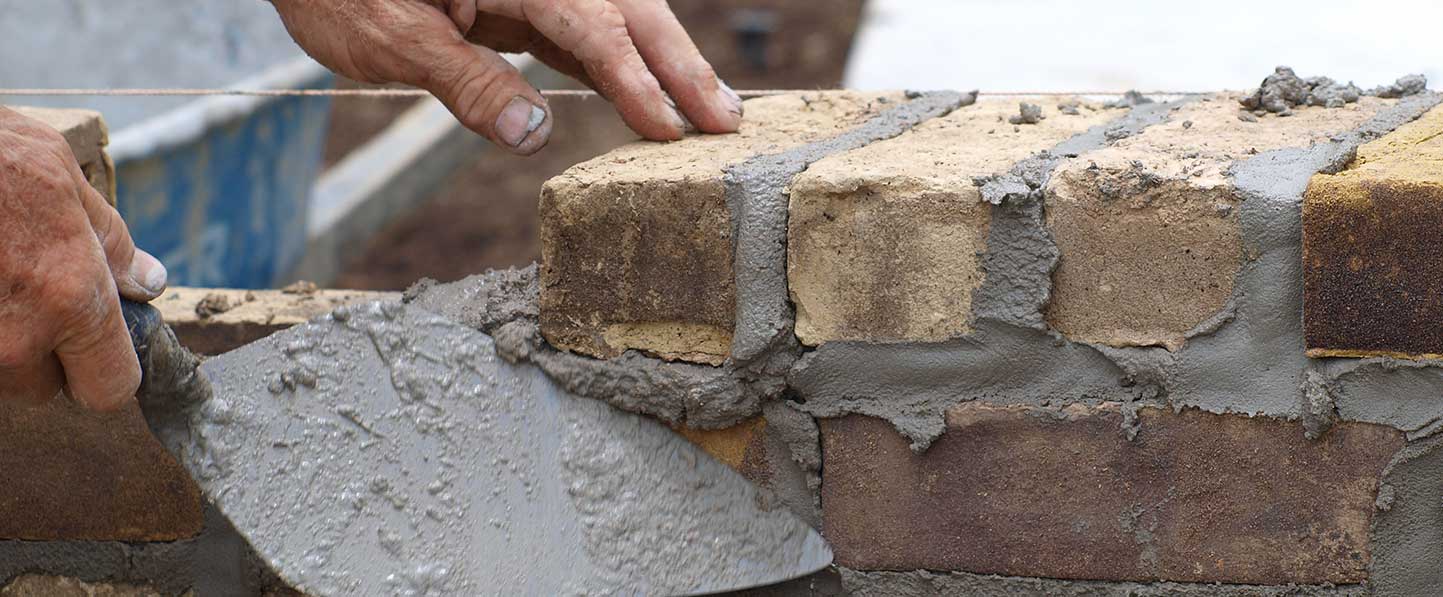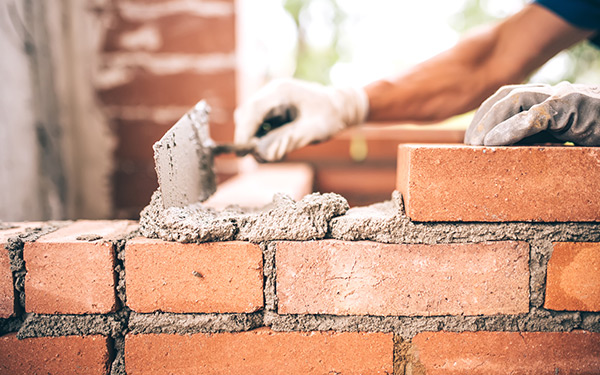Chimney Flashing and Cap Repair: Protect Your Home from Aspects
Chimney Flashing and Cap Repair: Protect Your Home from Aspects
Blog Article
Opening the Keys of Sustainable Masonry Construction Practices for Eco-Friendly Structures
In the world of modern-day building and construction, the search of lasting methods has actually become extremely important. Among the myriad methods to green structure, sustainable masonry building and construction sticks out as a time-tested and sturdy approach that holds a wealth of untapped potential. From the option of products to innovative building strategies, the keys to attaining sustainability within stonework building and construction are multifaceted and intriguing. By checking out the advantages, products, methods, and future trends of lasting masonry, a much deeper understanding of exactly how these methods can shape the future of environmentally friendly structures emerges.
Advantages of Sustainable Masonry Building
Welcoming lasting stonework building practices not only reduces ecological influence but likewise supplies long-term financial benefits to builders and communities. By utilizing products like recycled blocks, blocks, and stones, home builders can substantially decrease the carbon footprint of their jobs while advertising source efficiency. Additionally, lasting masonry building and construction techniques, such as appropriate insulation and thermal mass buildings, can improve power efficiency within buildings, resulting in decreased operational prices gradually.
In addition, the resilience and durability of stonework frameworks add to lasting economic benefits. Structures built using sustainable stonework techniques typically need less repair and maintenance, equating to set you back savings for builders and residential property owners. The longevity of stonework materials also makes sure that frameworks remain stable and protected, minimizing the demand for frequent renovations or replacements.
Eco-Friendly Masonry Products
Using eco-friendly masonry products is a pivotal action in the direction of boosting the sustainability of construction techniques and reducing environmental influence while taking full advantage of long-term financial advantages. Sustainable stonework products are sourced, generated, and made use of in a manner that reduces total environmental impact. Products such as recycled blocks, redeemed stone, and lasting concrete blocks are coming to be increasingly popular selections for eco-conscious home builders. Recycled blocks, for instance, not just draw away waste from garbage dumps yet also need much less energy to generate contrasted to brand-new blocks. Recovered stone provides a special visual appeal while lowering the demand for new quarrying. Lasting concrete blocks integrate recycled accumulations and may feature improved insulation residential properties, adding to power performance in structures.
Moreover, all-natural products like adobe, rammed earth, and straw bundles provide outstanding thermal mass residential or commercial properties, reducing the need for heating and cooling down power. These materials are typically locally offered, promoting local economies and decreasing transportation-related carbon exhausts. By choosing environment-friendly masonry products, building jobs can substantially decrease their ecological impact and contribute to the creation of healthier, much more sustainable built environments.
Energy-Efficient Stonework Methods
Energy effectiveness plays an essential function in boosting the sustainability of masonry building and construction practices. By executing energy-efficient stonework methods, building contractors can dramatically minimize the total energy usage of a building, causing lower operational expenses and a smaller environmental footprint. One key energy-efficient stonework technique is the use of thermal mass, which involves incorporating thick materials like concrete or brick right into the structure's structure to soak up and save heat. This assists manage indoor temperatures, decreasing the demand for mechanical home heating and cooling systems.

Technologies in Sustainable Stonework
Recent improvements in lasting masonry techniques have brought around innovative strategies that are improving the building market. One such advancement is the development of self-healing concrete, which uses microorganisms embedded within the concrete to recover cracks autonomously. This advancement not only reduces upkeep expenses yet also improves the longevity of masonry frameworks, adding to their sustainability.
Another noteworthy technology is the usage of recycled aggregates in masonry building and construction - masonry contractor. By integrating products such as crushed ceramic waste or recycled glass into concrete mixes, building contractors can lower the ecological impact of building tasks while preserving architectural integrity. This method not just draws away waste from land fills yet additionally saves natural sources, making it a crucial advancement in lasting stonework construction
Furthermore, the assimilation of digital layout tools, such as Structure Information his explanation Modeling (BIM), is transforming the means stonework structures are planned and created. BIM enables more specific estimations, decreased material wastage, and boosted power performance, ultimately resulting in even more sustainable building techniques. These developments collectively indicate an encouraging future for sustainable stonework construction in the age of green buildings.
Future Trends in Masonry Sustainability
With the cutting-edge strides made in sustainable stonework practices, the future fads in stonework sustainability are positioned to more transform the building helpful resources and construction sector. One of the crucial fads shaping the future of masonry sustainability is the enhanced combination of technology. Innovations such as Structure Details Modeling (BIM) and online fact simulations are being made use of to optimize masonry building procedures, bring about decreased material waste and enhanced power efficiency in structures.
Additionally, the growth of novel lasting materials is set to play a significant duty in enhancing the eco-friendliness of stonework building. masonry contractor. Innovations like self-healing concrete, recycled aggregates, and bio-based binders are obtaining grip for their capability to minimize ecological influence while preserving architectural integrity

Final Thought
In verdict, lasting masonry building and construction practices use numerous advantages for green buildings. By making use of environmentally friendly products and energy-efficient techniques, stonework can contribute to an extra lasting built environment. Innovations in sustainable masonry are continually being developed to better improve the ecological efficiency of buildings. Looking towards the future, the fad of masonry sustainability is anticipated to expand, causing more environmentally pleasant and Visit Website energy-efficient construction practices in the years to come.
Report this page